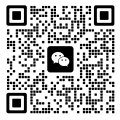Decoding the Export Trends of Instrumentation and Measurement Devices
Introduction:
Instrumentation and measurement devices play a vital role across various industries, from scientific research, production, to our daily life. From basic temperature gauges and pressure gauges, to fully automated control systems, these instruments facilitate the measurement, indication, recording, regulation, and control of various parameters in physical, chemical, and biological processes.
Market Size and Structure
In 2023, the global market for instrumentation and measurement devices is projected to reach a staggering US$12 trillion, marking an 8.5% year-on-year growth. Notably, China’s market is expected to reach ¥2.5 trillion(US$375 billion), growing by 10.1% and commanding a 17.6% share of the global market, second only to the United States. The market is structured across various product types, with electronic measurement instruments comprising the largest share at 32.4%, followed by industrial automation control systems (24.6%), analytical and detection instruments (19.8%), optical instruments (9.7%), calibration equipment (7.8%), and others (5.7%).
Global Product Category Structure:
Electronic Measurement Instruments (32%):
These devices utilize electronic technology to measure electromagnetic signals, including oscilloscopes, RF instruments, multimeters, data loggers, etc. Notably, this segment faces high technological barriers, primarily dominated by developed countries. However, with supportive policies, trends are shifting towards localization and intelligent manufacturing.
Industrial Automation Control Systems (25%):
These encompass systems and devices that utilize various sensors for integrated automatic control through data collection, induction, and analysis. Characterized by high technological barriers, the trend is towards intelligence, high precision, and wireless functionality, supported by government policies promoting localization and intelligent manufacturing.
Analytical and Detection Instruments (20%):
Applied across scientific and daily life scenarios, this category includes a wide range of analysis and detection instruments, spanning physical, chemical, and biological analyses (e.g., spectrometers, chromatographs, temperature, pressure, and flow meters). These devices serve as fundamental detection equipment with low technological barriers and are witnessing trends towards portability, intelligence, and diversification.
Optical Instruments (10%): Comprising devices composed of single or multiple optical components, including real-image instruments (projectors, cameras) and virtual-image instruments (telescopes, microscopes), this segment demonstrates a broad span of basic and specialized applications across science, military, and daily life. Trends emphasize portability and localization.

Conclusion:
As the global demand for instrumentation and measurement devices continues to surge, understanding market trends and product dynamics becomes imperative for stakeholders. With China emerging as a significant player in this landscape, strategic initiatives focusing on innovation, localization, and intelligence will shape the future trajectory of the industry.
In line with our commitment to innovation and quality, we are expanding our global presence and seeking partnerships with dealers who share our vision. If you are interested in collaborating with a leading Chinese sensor research and manufacturing enterprise, we invite you to explore opportunities with us and become a reseller of Holykell.





